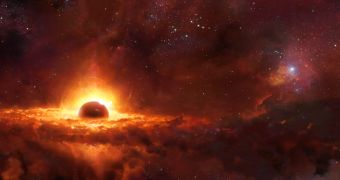Speaking at a meeting of the Canadian Astronomical Society in Quebec this past June 11, researchers with the Harvard-Smithsonian Center for Astrophysics announced the discovery of what they like to call a treasure trove of red nugget galaxies.
Contrary to what some may assume given their name – also quite disappointing, some might want to add, – such galaxies are not made from chicken nuggets. If they were, we would have probably found them sooner using our sense of smell alone.
Scientists with the Center for Astrophysics explain that the nearly 200 newly discovered red nugget galaxies are chiefly made up of old, red stars. Besides, they are surprisingly compact and the stars they house sit very close to one another.
In fact, evidence at hand indicates that, despite the fact that they are about 10 times more massive than our good old Milky Way, the volume that red nuggets occupy in space is about 100 times smaller than the one taken up by our galaxy.
In order to pin down these galaxies, the scientists who worked on this project first compiled and analyzed information provided by the Sloan Digital Sky Survey. Later on, they turned to online telescope archives to confirm their findings.
What's interesting is that, because they are so compact and neatly packed, the red nugget galaxies identified during this investigation appeared as no more and no less than simple stars in photos included in the Sky Survey.
However, following an analysis of their spectra, their true identity was revealed. “These red nugget galaxies were hiding in plain view, masquerading as stars,” explains astronomy expert and study leader Ivana Damjanov with the Center for Astrophysics.
It is believed that, while the universe was still in its early days, such red nugget galaxies were a rather common sight. However, as the universe got older, they became rather few and far in between, astronomers say.
Commenting on the importance of this discovery, researcher Margaret Geller said, “Now we know that many of these amazingly small, dense, but massive galaxies survive. They are a fascinating test of our understanding of the way galaxies form and evolve.”
Interestingly enough, news of the discovery of these red nugget galaxies comes shortly after a team of University of Colorado Boulder brainiacs announced that they had successfully located an odd hybrid star known to the scientific community as a Thorne-Żytkow object for the first time ever.

 14 DAY TRIAL //
14 DAY TRIAL //